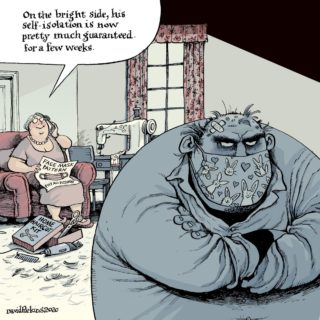Young healthy athletes who play sports where body contact is an integral, or even a possible, part of the game have differences in their brains typically associated with concussion or mild brain injury, a new study has found.
In the midst of an international discussion about the long-term consequences of sports-related brain injuries, researchers at St. Michael’s Hospital in Toronto performed preseason brain scans on 65 healthy young varsity athletes. The study looked at the effect sports of different levels of contact had on the athletes’ brains.
“These differences do suggest that although these athletes report as healthy and don’t have significant health problems, there are still some biological consequences to collision,” said Nathan Churchill, a postdoctoral fellow in St. Michael’s neuroscience research program and the lead author of the report. “This is the first study that shows that the [differences] are present even in the young healthy athletes, and they are present across a variety of different sports.”
The study looked at athletes, both men and women, from three different sports groups: collision sports, which involve consistent, purposeful body-to-body contact, such as football and rugby; contact sports, where contact is allowed, but is not an integral part of the game, such as soccer and basketball; and non-contact sports, where there is no contact allowed, such as swimming or golf.
The progressive differences in the brains of athletes participating in the three sports groups showed that the more contact in a sport, the greater the effect on the structure, function and chemical markers of the brain. People in sports with higher levels of contact showed decreased brain activity and signs of reduced communication between brain areas, particularly in regions involved in vision and motor function.
The study included athletes who had long-term concussion histories, along with those who had never experienced concussion. The differences in the brains of those who had concussion histories were amplified, Dr. Churchill said, while the group without concussion histories also showed decreased brain activity.
“It’s all pointing to the same direction: that people with more contact exposure show changes in many different aspects of the brain that look a little bit like a concussion,” Dr. Churchill said.
He added that most research has focused on more extreme cases of athletes who play collision sports, such as professional football players or boxers who retired after experiencing decades of exposure to collisions. He said that this study was surprising in that it found that even among young, healthy, varsity-level athletes, there are actual biological consequences of participating in contact sports.
“What is going on in the brain of people in collision and contact sports is more a function of decreased brain activity than actual severe injury to the brain tissue,” Dr. Churchill said. “We can’t speculate at this point to say that these people are going to have negative health outcomes, but we can say that we now know what is going in the brain, which helps us to get a better handle on what the consequences might be in the long term.”
The differences in the brains do not yield significantly impaired day-to-day functioning and all the athletes are performing their sports well, said Tom Schweizer, head of St. Michael’s neuroscience research program and a co-author of the paper.
He said this study aimed to understand how contact in sports affects healthy brains, in order to better understand long-term outcomes and why a small number of athletes in contact sports show negative long-term health consequences, adding that the benefits of sports on health is also important to remember.
“We set out to see what the normal response is to contact exposure; how does the brain adapt and respond to this type of exposure,” Dr. Schweizer said. “There is something clearly going on; you see that there are changes, but the changes are not causing any cognitive or symptom differences. But there is something going on, it’s just not translating to day-to-day consequences.”
Sarah Watling, a former varsity athlete at the University of Toronto, said she stopped playing soccer after three years because of her growing concerns about the long-term consequences of the sport on her brain. She said she suffered numerous concussions, which made it difficult for her to complete her studies.
Working as a research co-ordinator on the new study, she said there is a misconception that sports such as soccer or basketball don’t have consequences on the brain.
“We were throwing our heads up in the air to head the ball five to seven times in a game, not thinking twice what that may do, and it never crossed our mind to wonder maybe this is not the best thing to do for our brains. So when results like this start to emerge, you think, wow, I wonder what is going on with me,” Ms. Watling said. “If it’s not football or boxing, people are not as concerned or as skeptical of the potential consequences.”
MIRIAM KATAWAZI
National Reporter, The Globe and Mail
Published Tuesday, Aug. 22, 2017 12:01AM EDT
Last updated Tuesday, Aug. 22, 2017 5:25AM EDT

